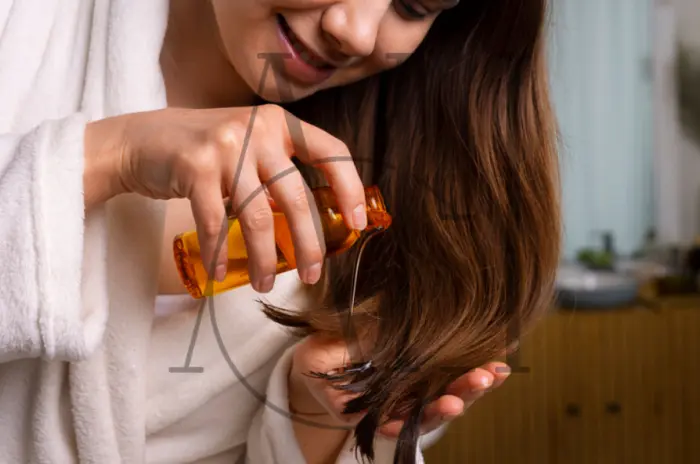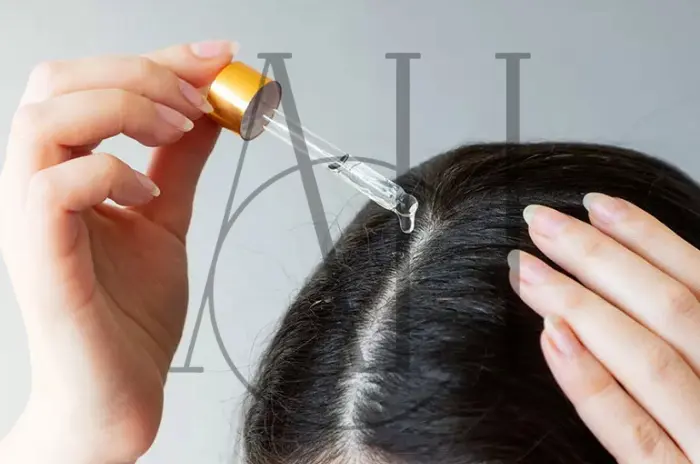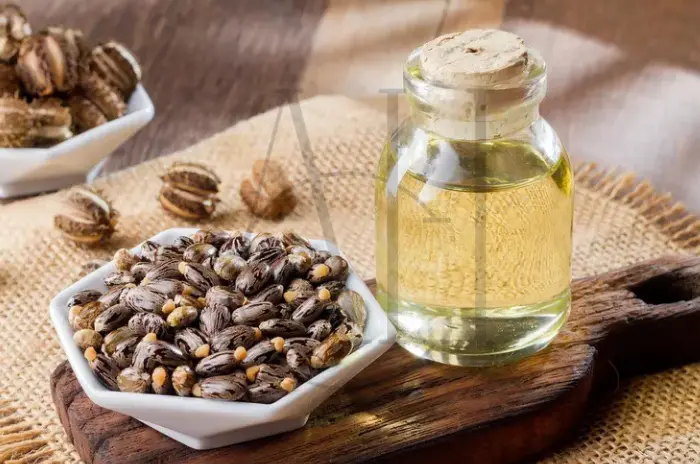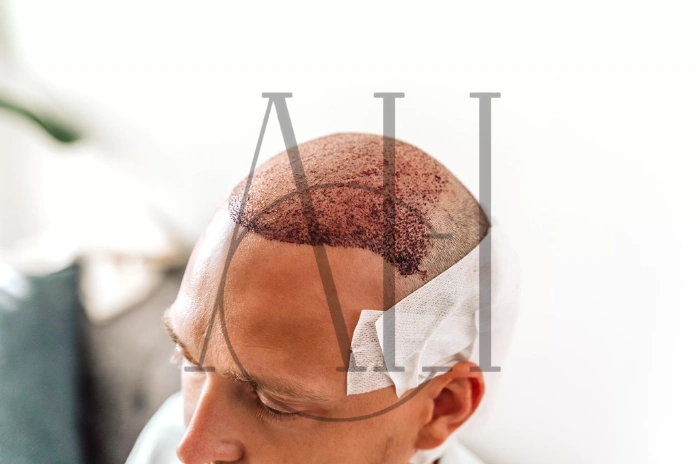Hair oil has been a cornerstone of hair care for centuries, yet many people remain uncertain about its proper use. At Albania Hair Clinic, our intermediary organization has observed countless clients who could benefit from incorporating quality hair oils into their routine. This comprehensive guide will help you understand everything about hair oils and how to use them effectively.
Table of Contents
ToggleWhat Is Hair Oil & Its Key Benefits
Hair oil is a concentrated treatment that penetrates the hair shaft and nourishes the scalp. Unlike regular conditioners that work on the surface, oils provide deep moisturization and protection.
How Hair Oil Nourishes and Protects the Hair Shaft
Hair oils work by filling the microscopic gaps in damaged hair cuticles. The molecular structure of certain oils allows them to:
- Penetrate deeply into the cortex
- Form a protective barrier against environmental damage
- Reduce protein loss during washing
- Smooth the cuticle for enhanced shine
Scalp Benefits: Hydration, Circulation, Dandruff Reduction
Regular scalp massage with appropriate oils stimulates blood circulation, which is crucial for healthy hair growth. Our intermediary organization frequently recommends oil treatments for clients experiencing:
- Dry, flaky scalp conditions
- Poor circulation leading to thinning
- Inflammation and irritation
Why Using Hair Oil Correctly Matters
Understanding the science behind hair oil application is essential for achieving optimal results without creating problems like greasiness or buildup.
The Science Behind Hair Oil Benefits
Different oils have varying molecular weights and compositions:
| Oil Type | Molecular Weight | Best For | Key Benefits |
|---|---|---|---|
| Coconut | Low | Damaged hair | Deep penetration, protein retention |
| Argan | Medium | All hair types | Antioxidants, vitamin E |
| Jojoba | Medium | Oily scalp | Sebum regulation, lightweight |
| Castor | High | Hair growth | Ricinoleic acid, circulation boost |
How Hair Oil Nourishes Your Scalp & Strands
The application technique determines effectiveness. Proper oiling involves:
- Sectioning hair systematically
- Warming oil to body temperature
- Massaging in circular motions
- Allowing adequate absorption time
Choosing the Right Oil for Your Hair Type
Selecting the wrong oil can worsen existing hair problems. Our intermediary organization has developed guidelines based on extensive client feedback.
Best Oils for Fine or Oily Hair
Fine hair requires lightweight oils that won’t weigh it down:
- Jojoba Oil: Mimics natural sebum production
- Grapeseed Oil: Light texture, won’t clog pores
- Argan Oil: Provides moisture without heaviness
Application tip: Use only 2-3 drops on mid-lengths and ends, avoiding the scalp area.
Best Oils for Dry, Coarse, Curly Hair
Thicker hair textures benefit from richer, more penetrating oils for curly hair:
- Coconut Oil: Deep moisturization for severely dry hair
- Shea Butter Oil: Intense nourishment for coarse textures
- Avocado Oil: High in fatty acids for curl definition

Best Hair Oils for Different Hair Types
Oils for Dry & Damaged Hair (e.g., Argan, Coconut)
Damaged hair needs intensive repair. These oils excel at restoration:
Argan Oil Benefits:
- Rich in vitamin E and antioxidants
- Repairs split ends and breakage
- Provides long-lasting moisture
Coconut Oil Benefits:
- Prevents protein loss during washing
- Creates protective barrier against damage
- Antimicrobial properties support scalp health
Oils for Oily Scalp (e.g., Jojoba, Grapeseed)
Counterintuitively, oily scalps can benefit from the right oils. These regulate sebum production rather than adding excess oil.
Oils for Hair Growth (e.g., Rosemary, Castor)
Growth-promoting oils work by improving scalp circulation and providing follicle-nourishing compounds.
| Growth Oil | Active Compounds | Application Method |
|---|---|---|
| Rosemary | Carnosic acid, rosmarinic acid | Mix with carrier oil, massage 2x weekly |
| Castor | Ricinoleic acid | Direct application, leave overnight |
| Peppermint | Menthol | Dilute heavily, use sparingly |
How to Apply Hair Oil Correctly
Technique determines whether oil treatments help or harm your hair.
Pre-Shampoo Treatments: Technique & Timing
This method protects hair during the harsh cleansing process:
- Apply oil to dry hair 30-60 minutes before washing
- Focus on mid-lengths and ends
- Use a wide-tooth comb to distribute evenly
- Shampoo twice to remove completely
Hot-Oil & Overnight Treatments: Pros, Cons & Cleanup
Hot Oil Treatment:
- Pros: Enhanced penetration, relaxing experience
- Cons: Risk of burns, requires careful temperature control
- Cleanup: Use clarifying shampoo followed by regular shampoo
Overnight Treatment:
- Pros: Maximum absorption time
- Cons: Messy, can clog pores, difficult to remove
- Cleanup: Essential to wash thoroughly in morning
Daily or Post-Wash Application: Sealing & Styling Tips
For daily use, apply minimal amounts to damp hair as a leave-in treatment. This seals moisture and provides heat protection.
How Often Should You Oil Your Hair?
Frequency depends entirely on individual hair characteristics and lifestyle factors.
Hair Type-Specific Recommendations (Fine, Dry, Oily)
- Fine Hair: Once weekly, pre-shampoo only
- Normal Hair: 2-3 times weekly, various methods
- Dry/Damaged Hair: Daily leave-in, weekly intensive treatment
- Oily Hair: Bi-weekly, focusing on ends only
Signs of Over-Oiling & How to Avoid Build-Up
Watch for these warning signs:
- Hair feels consistently greasy despite washing
- Increased breakage or tangling
- Scalp irritation or clogged follicles
- Dull, heavy appearance
Common Mistakes to Avoid with Hair Oil
Our intermediary organization frequently sees clients making these errors:
Using Excessive Amounts
Problem: More oil doesn’t equal better results Solution: Start with 3-4 drops, increase gradually if needed
Applying on Oily Scalp or Wet Hair
Problem: Can worsen greasiness and prevent absorption Solution: Use on clean, slightly damp (not wet) hair
Leaving Oil Overnight Without Proper Washout
Problem: Leads to buildup, clogged pores, and breakouts Solution: Always use clarifying shampoo after intensive treatments
Expected Results & Timeline
Realistic expectations prevent disappointment and encourage consistency.
Hydration, Shine, Frizz Reduction in 2–4 Weeks
Initial improvements appear quickly:
- Increased shine after first use
- Reduced frizz within one week
- Improved manageability after 2-3 uses
Managing Split Ends & Hair Texture Improvement
While oils can’t repair existing split ends, they prevent new damage and improve overall texture over 4-6 weeks of consistent use.
What to Expect if You’re Targeting Hair Growth
Hair growth benefits require patience. Expect to see:
- Improved scalp health within 2-4 weeks
- Reduced shedding after 6-8 weeks
- Visible length retention after 3-4 months
FAQ
How do I choose the most suitable hair oil?
Fine hair needs lightweight oils like jojoba or grapeseed, while thick, dry hair benefits from heavier oils like coconut or castor oil.
How often should I oil my hair to avoid greasiness?
Fine hair: weekly; normal hair: 2-3 times weekly; dry hair: daily light application plus weekly intensive treatment.
Which oils are best for hair growth?
Growth: rosemary and castor oils; dandruff: tea tree and neem oils; frizz: argan and coconut oils.
What mistakes should I avoid when using hair oil?
Avoid using too much product, applying to wet hair, and leaving intensive treatments in too long without proper removal.




